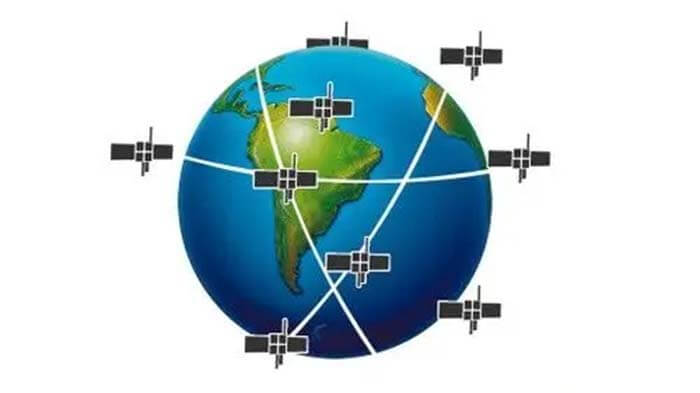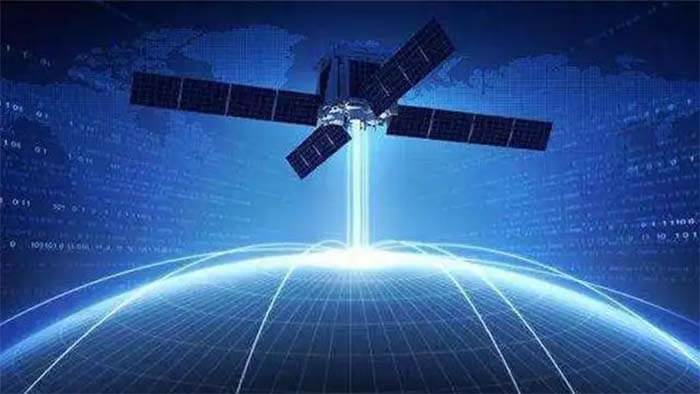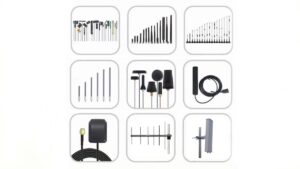The GPS system global positioning system has three major parts: the space part, the ground control system, and the user equipment part.
The space part of the GPS system is composed of 24 satellites, which are located over 20,200km from the earth’s surface, with an operation period of 12h.
The satellites are evenly distributed on six orbital planes with an orbital inclination of 55°. The distribution of satellites makes it possible to observe more than 4 satellites anywhere in the world and at any time and to pre-store navigation information in the satellites.
GPS satellites will gradually decrease the navigation accuracy over time because of atmospheric friction and other problems.
The ground control GPS system consists of a monitoring station, the main control station, and a ground antenna, with the main control station located in Springfield, Colorado, USA. The ground control station is responsible for collecting messages from satellites and calculating satellite ephemeris, relative distance, atmospheric correction, and other data.
The following is a brief description of these three parts of the GPS system.

Space part of the GPS system
The ground monitoring system of GPS system working satellites mainly consists of the main control station, injection station, and monitoring station.
GPS system ground monitoring station mainly consists of the main control station, three injection stations, and five monitoring stations19.
The main control station mainly manages and coordinates the work of each part of the ground monitoring system, collects data information from each monitoring station, compiles navigation message data, and sends it to the injection station.
The injection station then injects the ephemeris of the satellite into the GPS satellite, monitors the operation status of the satellite, and sends control command information to the satellite; satellite maintenance, and handling of abnormal conditions.
The main control station calculates the orbital parameters and clock difference parameters of each satellite according to the observation data of each monitoring station, and compiles these data into navigation messages and sends them to the injection station, which then injects the navigation messages sent by the main control station into the memory of the corresponding satellite.
If a ground station fails, the navigation information pre-stored in the satellite will be available for a while, but the navigation accuracy will be reduced.
User equipment of the GPS system
The satellites to be measured are selected by the satellite cutoff angle and tracked. When the receiver captures the signal of the tracked satellite, it can measure the pseudo-distance from the receiving antenna to the satellite and the rate of change of the distance, and demodulate the satellite orbit parameters and other data.
According to these data, the microprocessor computer in the receiver can calculate the positioning according to the positioning solution method, and calculate the latitude, longitude, altitude, speed, time, and other information of the user’s geographical location.
The receiver hardware and software, as well as the post-processing software package of GPS data, constitute the complete GPS user equipment, and the structure of the GPS receiver is divided into two parts: the antenna unit and the receiver unit.
The receiver generally adopts two kinds of DC power supplies, internal and external. The purpose of setting the internal power supply is to replace the external power supply without interrupting the continuous observation. When using the external power supply when the internal battery is automatically charged. After the power is turned off, the internal battery supplies power to the RAM memory to prevent data loss.
At present, various types of receivers are becoming smaller and lighter in weight to facilitate field observation using 1201.
Besides the How is A GPS System Composed article, you may also be interested in the below articles.




